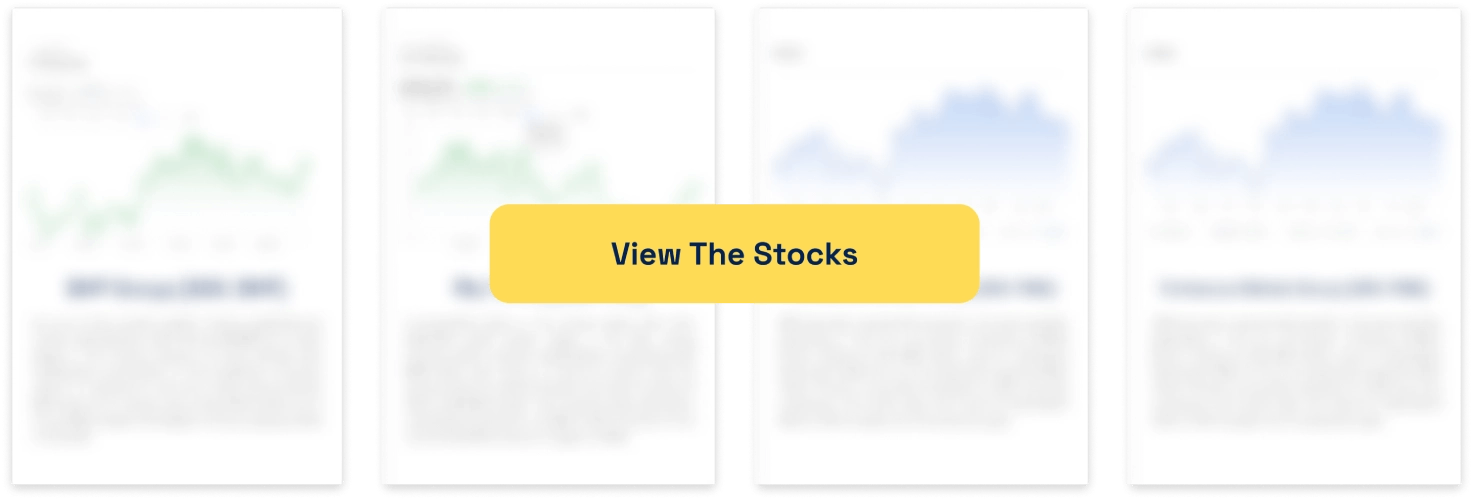The Big Four Banks: Which is the best one for investors in 2025?
![]() Nick Sundich, June 3, 2025
Nick Sundich, June 3, 2025
The so-called Big Four Banks on the ASX are among the ASX’s most prominent companies.
They are capitalised at nearly $400bn collectively, record among the largest profits of any listed company and are renowned for being the most significant dividend payers.
At the same time, they are among the most highly-regulated and scrutinised Australian companies.
So of all the big four banks, which one is the best? Ultimately, we think the answer comes down to an individual investors’ objectives.
First published March 2023. Last updated May 2025.
What are the Big Four Banks?
The term ‘Big Four Banks’ alludes to the Commonwealth Bank of Australia (ASX:CBA), Westpac Banking Corporation (ASX:WBC), Australia and New Zealand Banking Group – or ANZ Bank for short – (ASX:ANZ) and National Australia Bank (ASX:NAB).
These banks hold the largest majority of loans and deposits in Australia and all have an ‘oligopoly’ market position. As a result, Australian consumers have a love-hate relationship with them.
There is a lot of debate as to where Macquarie (ASX:MQG) sits. Some argue the term ‘Big 5’ should be used with Macquarie included, especially given it is growing its retail banking business. Others argue its legacy of being an institutional investor first means it belongs in a different class, and for now we’d lean towards the former view.
Which of the Big Four Banks is the biggest?
CBA is the biggest of the Big Four Banks by market capitalisation with ~$290bn as at early June 2025. None of the other Big Banks come close.
CBA also has the highest market share in payment terminals and business transaction accounts not to mention the highest home loan volume $586bn, of which $387bn are owner-occupied.
The state of the market
For the sake of investors that have been living on Planet Mars for the past few years, let’s recap how the big four banks.
The COVID-19 pandemic, and fears that it would cause an economic depression, led to the RBA, the big four banks and their smaller peers cutting interest rates to record lows.From May 2022 to June 2023, however, the RBA delivered more than a dozen consecutive interest rate increases, all passed on by CBA and its peers.
At first glance, you might think this should’ve been positive for the big four banks, given higher interest payments as fixed-rate loans revert to the new rates, therefore generating higher earnings. And despite fears that customers would struggle with repayments, most put their mortgages on the bottom of their list of things to give up.
However, two things should be borne in mind.
First the big four banks still had to compete for home loan customers as they look for the best deal – potentially offering discounts to incentivise them to refinance with them or just stay. And Second, banks also had to raise deposit rates and this ate into their profits as well.
Now interest rates are falling and so are deposits…but forget about rates falling back to zero. So it seems banks are in a ‘new normal’ if you will.
The state of each of the Big Four Banks
In the last year, CBA has gained 44%, Westpac 20%, NAB 9% and ANZ is flat. In 5 years, CBA is up 155%, Westpac up 70%, NAB is up 92% and ANZ is up 47%.
What’s been happening with CBA is best described as Australia’s local ‘GameStop saga’. Despite all the analysts saying it was overvalued, retail investors turn to it, winning the argument. You can say it is overvalued all you like, but the more the share price keeps rising, the most ignorant you look.
As for NAB, why was it the second best in 5 years? Because other than CBA, it has been the best performing Big Bank. After being the most heavily scrutinised during the Royal Commission, it hired Ross McEwan as CEO and it was able to grow its business banking unit stronger than the competition and returned its home loan unit to growth. Momentum has stalled in the last 12 months as McEwan departed.
Meanwhile, Westpac and ANZ have lagged over much of the same time period. Westpac has struggled regain its mojo with investors since its $1bn AUSTRAC fine back in 2020 but now looks to have momentum in its favour. Westpac’s relatively new CEO Anthony Miller is putting his stamp on the Big Four bank and looking to outperform where the bank has historically underperformed in years to come. These have included brand rationalisation, a pursuit to grow the proportion of mortgages on its book generated in-house (i.e. without brokers) as well as a project by the name of Unite which will bring together the differing operating systems of its previous groups.
As for ANZ, it lost ground to its peers due to lagging technology and overexposure to the flagging New Zealand economy, although things have improved in the last 18 months as it finally launched its ANZ Plus platform.
Which of the Big Four Banks offer the best prospects?
This is a difficult question to answer, because many of the measures we like to use all paint different pictures.
All the banks are expected to see growth in their earnings (per share) and this would inevitably flow to its profit. According to consensus estimates, Westpac is expected to see stagnant EPS while CBA will see 5% growth and NAB and ANZ in between. CBA will inevitably continue to boast the highest dividend per share (although not the highest yield).
Nonetheless, CBA is considered overvalued with the median share price a 34% discount to the current price. NAB and Westpac’s projected share prices are 10% lower whilst ANZ is considered fairly valued by analysts, but even it has just a 4% premium. ANZ also boasts the highest yield – if we assume it will pay 80% of its EPS, this is a yield of 5.7%. Nonetheless, its peers are not far behind – Westpac has 4.7%, NAB has 4.4% and CBA as 2.7%.
So far as multiples are concerned, ANZ has the lowest P/E at 12.7x, followed by Westpac at 16.5x, NAB at 16.6x and CBA at 16.5x.
It is hardest to say which is the best big bank stock, although it is worth noting that NAB and Westpac not lead any of its peers in any of the aforementioned categories, while CBA and ANZ are evenly split.
Conclusion about the Big Four Banks
In our view, investors looking for the best big bank stock in Australia should make the decision on what they are searching for – long-term growth, dividends or just short-term stability.
Investors wanting short-term stability might be best sticking with CBA, while long-term growth-oriented investors might look to ANZ.
Dividend-oriented investors may look to CBA because of its track record of paying out the highest dividends, although they may not be the highest yielding.
Ultimately, all investors should examine factors such as financial performance, risk profile, dividends yields and volatility over time. Considering all these factors will provide an indication of which of the Big Four Bank stocks could be most beneficial for you as an individual investor.
What are the Best ASX Stocks to invest in right now?
Check our buy/sell tips
Blog Categories
Get Our Top 5 ASX Stocks for FY26
Recent Posts
FortifAI (ASX:FAI) Acquires NOL8 in a Bold Play to Power the Data Future
FortifAI’s NOL8 Acquisition Signals Next-Level Ambitions in Data Processing FortifAI Limited (ASX:FAI) surged 25% today after announcing a strategic pivot…
Fortescue (ASX:FMG) Digs Deeper Into Copper with Alta Acquisition
Fortescue’s C$139M Alta Deal Explained Fortescue (ASX:FMG) is moving to acquire the remaining 64 percent of Alta Copper Corp, a…
Electric Optic Systems (ASX:EOS) Lands Major $120M Asia Military Contract, Is It Time to Buy?
EOS Fires Up Second High-Energy Laser Sale Electric Optic Systems (ASX:EOS) is moving toward a potential partnership with a South…



